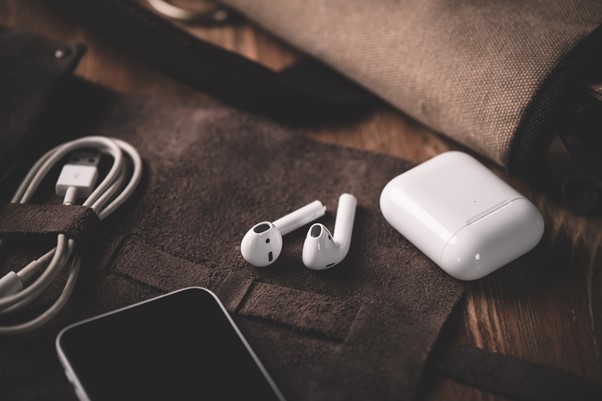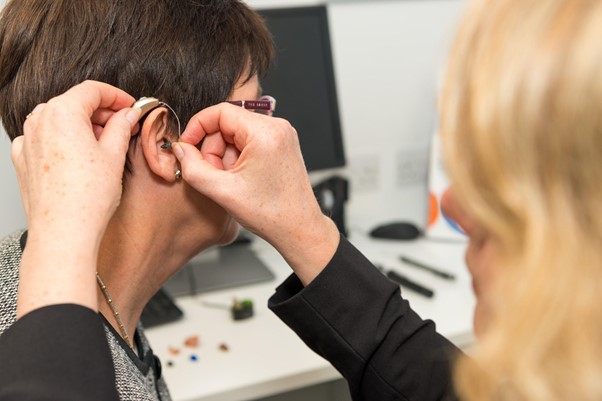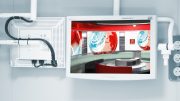There are several factors as to why the subject of hearing care remains a taboo topic.
One of the biggest, still, is that people enduring hearing loss feel old. It’s often a matter that is dealt with in isolation, while a common trend with people who find themselves in this scenario is that they feel ‘ashamed’ or ‘embarrassed’ by it. For that reason, it takes on average 10 years for them to address it.
The truth is, though, that millions of people are going through exactly the same thing. At the beginning of March, the World Health Organization reported that more than 40% of over 50s in the UK have hearing loss. That figure jumps to 70% for over 70s.
So, why don’t people want to talk about it?
A large part of that answer lies in the solution: hearing aids. Historically, they were bulky pieces of kit that protruded the ear and made it plainly obvious to the world that the person wearing them had a problem. They weren’t fashionable and, if anything, put people off seeking hearing care.
However, the hearing technology we have at our fingertips is now is incomparable. They have evolved in the hearing instruments and have introduced a wealth of features to support far beyond just improving one’s hearing.
Bluetooth connectivity has become the norm. They connect with our everyday services, like streaming devices, TVs, and mobile phones. They’re also much smaller, to the extent that it makes Apple’s incredibly popular AirPods look big.
Alongside the vastly improved technology, there is a clear recognition that hearing care is immensely important. It’s leaped up the health agenda and is now recognised as one of the globe’s largest diseases.
So, what does the future look like for the industry and how do we go about breaking the stigma that surrounds it?
Technology advancements are blurring the lines between wearable and the prescribed product
The market is changing.
Earlier this month, Bose released a brand-new hearing aid product over in the USA, an over-the-counter product that has been cleared by the FDA. We’re seeing hearing correction and augmented audio coming together and entering the consumer field. It’s only a matter of time before those situational-type products become readily available.

Image | Shutterstock.com
There are already certain available products that have noise reduction and speech enhancing technology built into them now. That’s part of that blurring I alluded to and something that hearing aid manufacturers have been mindful of.
Hearing aids need to be able to do so much more. They are required to be multifunctional. For example, if it acted like those pair of Apple AirPods I referenced earlier, that would be deemed cool and something you don’t mind having in your ear for hours on end.
Having hearing aids that are multi-functional and not, in a sense, just a hearing aid, is going to be the difference.
The future of audiology is going to become far more technical
What we need to be careful of in audiology is where the boundary starts and stops between an over-the-counter product that doesn’t require intervention and when you need a prescribed hearing aid.
The hearing care technology industry is in the privileged position to be able to create a product that, yes, do all of these things we want it to in order to help with our day-to-day lives, but also serves the specific purpose of being tailored to each person’s specific hearing requirements.
That’s supported by the IDA Institute which recently said that 86% of people enduring hearing loss still said they want to see a professional audiologist and wouldn’t feel comfortable trusting an over-the-counter product.
There’s an onus on us to bring to life the experience and highlight the value of spending time with an audiologist. That involves talking about listening conditions, which includes having an individual’s hearing and speech understanding in noise measured
Taking that approach tells us how the brain is processing information and combining that with a tone audiogram will allow us to see what features are required in our hearing aids going forward and how they need to be set up.
Hearing care technology has to be able to offer a full-package service
Hearing technology is going to become far more easily available. Because of that, businesses, like Boots Hearingcare, need to answer the question: why should someone enduring hearing loss come to us over someone else?
Typically, we have bundled all of our services and the hearing aid into one cost. I think that we will see that become unbundled, to the stage where we will have a service menu and a product menu.
That will provide more transparency to the customer as to what they’re getting and the choices they have available when it comes to the technological solution. Wax removal as a service is, finally, something we have traction with.
Like that, there will be all these different types of add-on services that we will start to bring into our portfolio. It won’t just be about technology. It will be how we can actually help people and make a difference.
Article by Karen Shepherd, Director of Professional Standards at Boots Hearingcare





